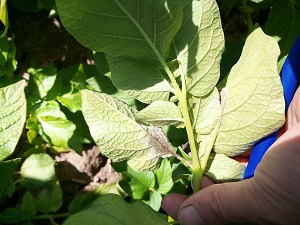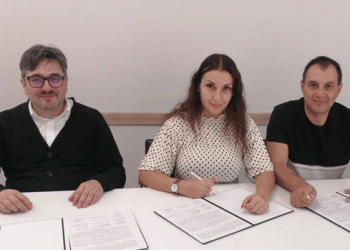Late blight (Phytophthora infestans D.B.) is one of the most common and harmful diseases in potato plantations. The weather conditions of the Kaliningrad region contribute to the favorable spread and development of the disease (high humidity and moderately warm weather). The first signs of late blight usually appear on the lower leaves of a potato bush in the form of small brown blurry spots bordered by a light green zone. Typical late blight spots can appear on leaf petioles, on stems, sometimes on buds and berries. In wet weather, a light lead-gray tint develops along the edges of dead tissue, mainly on the underside of the leaves. Tubers become infected in the field and during harvesting. On the surface of the tuber there are hard brownish-gray spots pressed into the tissue. A rusty-brown spongy tissue is visible on the section of the spot. The infection persists in seed tubers and plant debris.
In 2022, the first manifestation of late blight was noted on June 9, 2022. Annually, specialists from the branch of the Federal State Budgetary Institution Rosselkhozcenter of the Plant Protection Department examine potato plantations for infection with late blight. At the moment, 710 hectares of potato plantings have been surveyed. The infected area was 240 ha, the average prevalence of the disease was 21.6, the development of the disease was 5.4%. The maximum was observed in the Gvardeisky district.
To reduce the harm from late blight, it is necessary to continue professional treatments with one of the permitted fungicides in accordance with the “State Catalog of Pesticides and Agrochemicals Permitted for Use on the Territory of the Russian Federation.”








